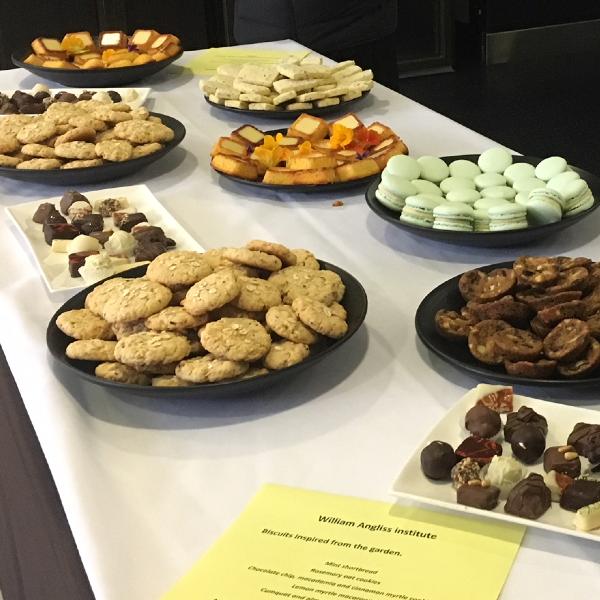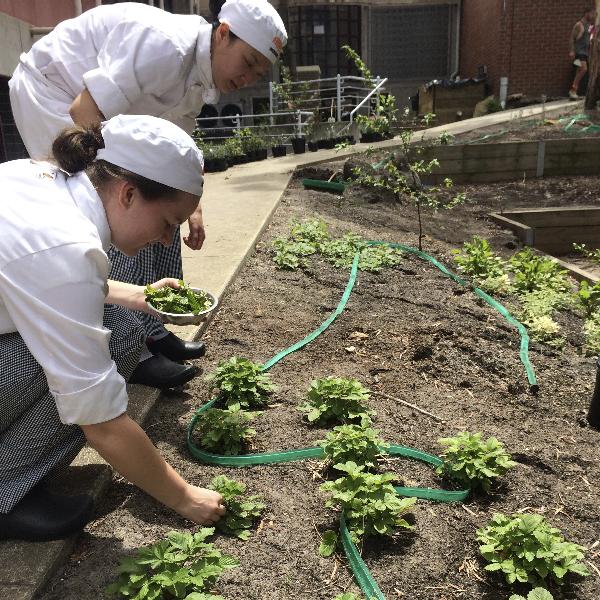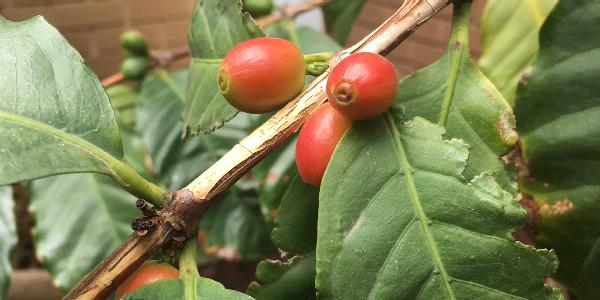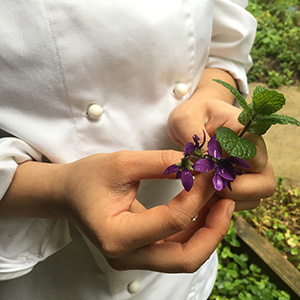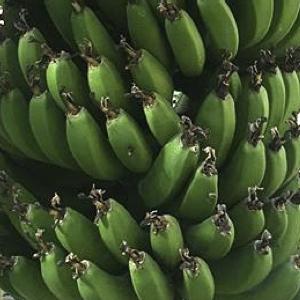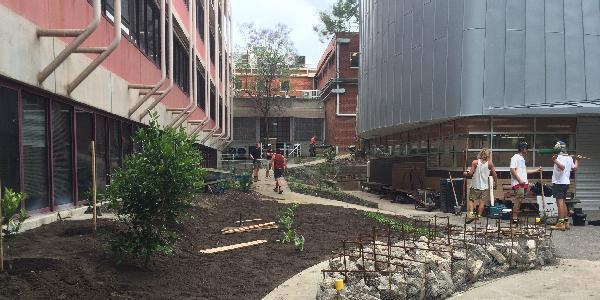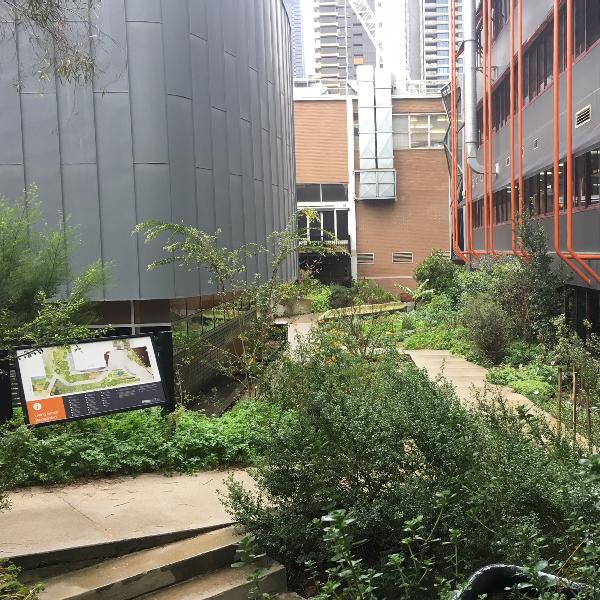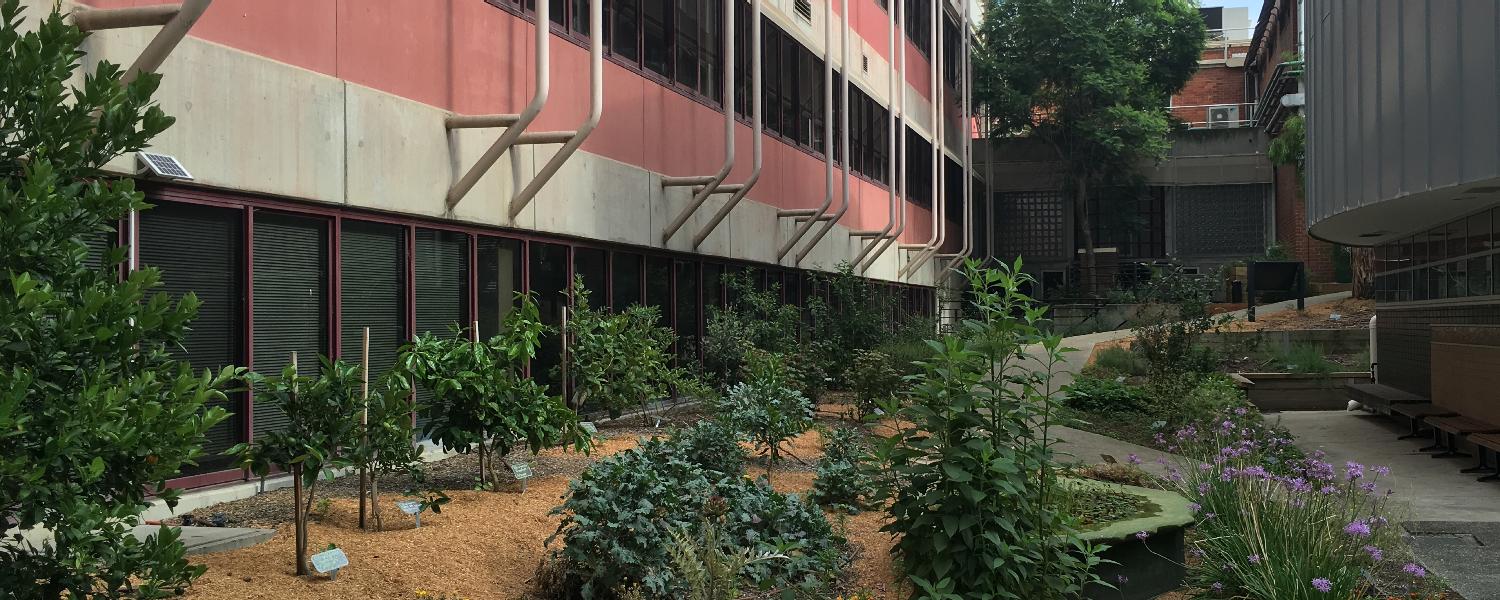
Project
Perennial kitchen garden
William Angliss Institute
2013 – 2015 || This garden, of over 450 m2 in a narrow inner city courtyard, was featured on Gardening Australia in 2018. In 2013, Karen designed the garden and project managed the installation through to its completion in 2015, also supplying most of the unusual edible and native plants. Features include a rain garden, extensive rainwater capture and reuse on site, the use of mostly perennial plants, with many of them being Australian natives. With little or no specialised maintenance, the garden is an example of low maintenance food gardening in urban situations, and is used daily by the cookery students. See more here.
Special plants for unusual situations
This garden presented with difficult situations, but as a permaculture saying goes, the problem is the solution. Many Australian native edibles are from rainforests, and are thriving in this garden: the iconic lemon myrtle (Backhousia citriodora) and finger limes being just two of around 30 native edibles planted here. A difficult spot where air-conditioning ducts exit the building was considered impossible for anything to grow, but now produces coffee beans, bananas, babacoes and Buddha’s hand citrus. Some of these are pictured above and the red berries are coffee fruits, which encase the coffee beans.
A teaching garden
As a garden in an educational institute, this was always intended to be used for teaching, and is used widely by the school community. Students forage for leafy and edible flower garnishes, use citrus such as cumquats and finger limes to make dishes ranging from ice-cream to baked goods, and infuse chocolates with herbs such as lemon myrtle. The garden has also been included in Open Gardens Victoria events.
This garden is now the living heart of William Angliss Institute.
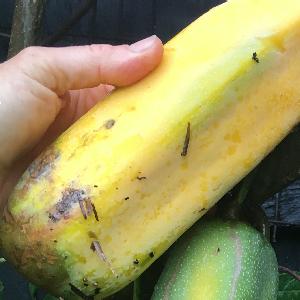

Babaco
A native to Ecuador, this plant is perfect for narrow shady spots in the garden where its hard to grow any other food plants. Also thriving in full sun, these plants are hardy and easy to grow. Fruits hang on the tree for around 9 months before ripening in summer, in time to be used in smoothies, juices, salads or salsa. Although also known as highland pawpaws, the fruits have a fizzy lemon taste and are extremely juicy, so they pair well with bananas in smoothies. Peel the thin skin before using.
Want to see more?
This garden was featured on Gardening Australia.
